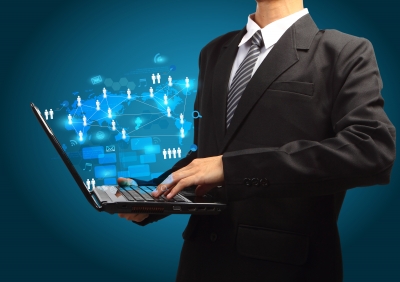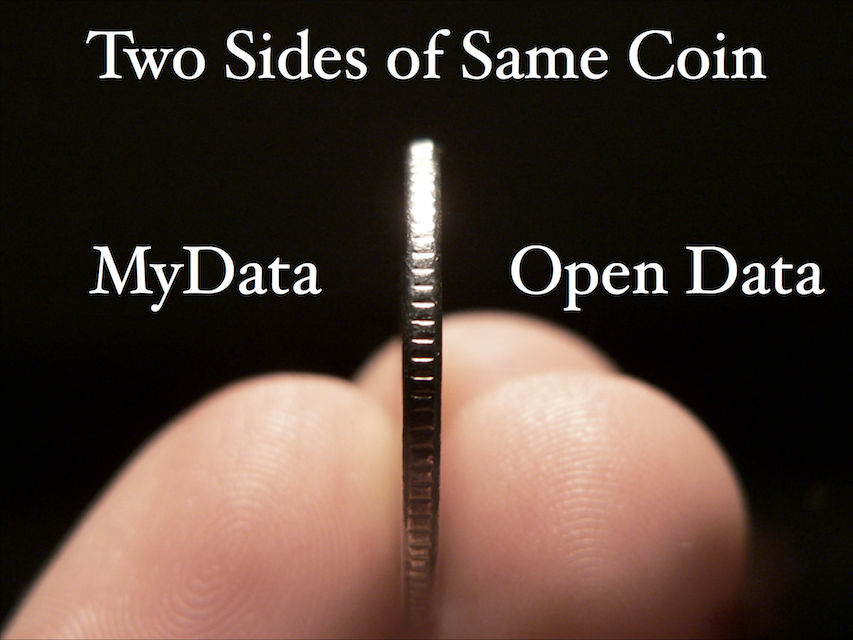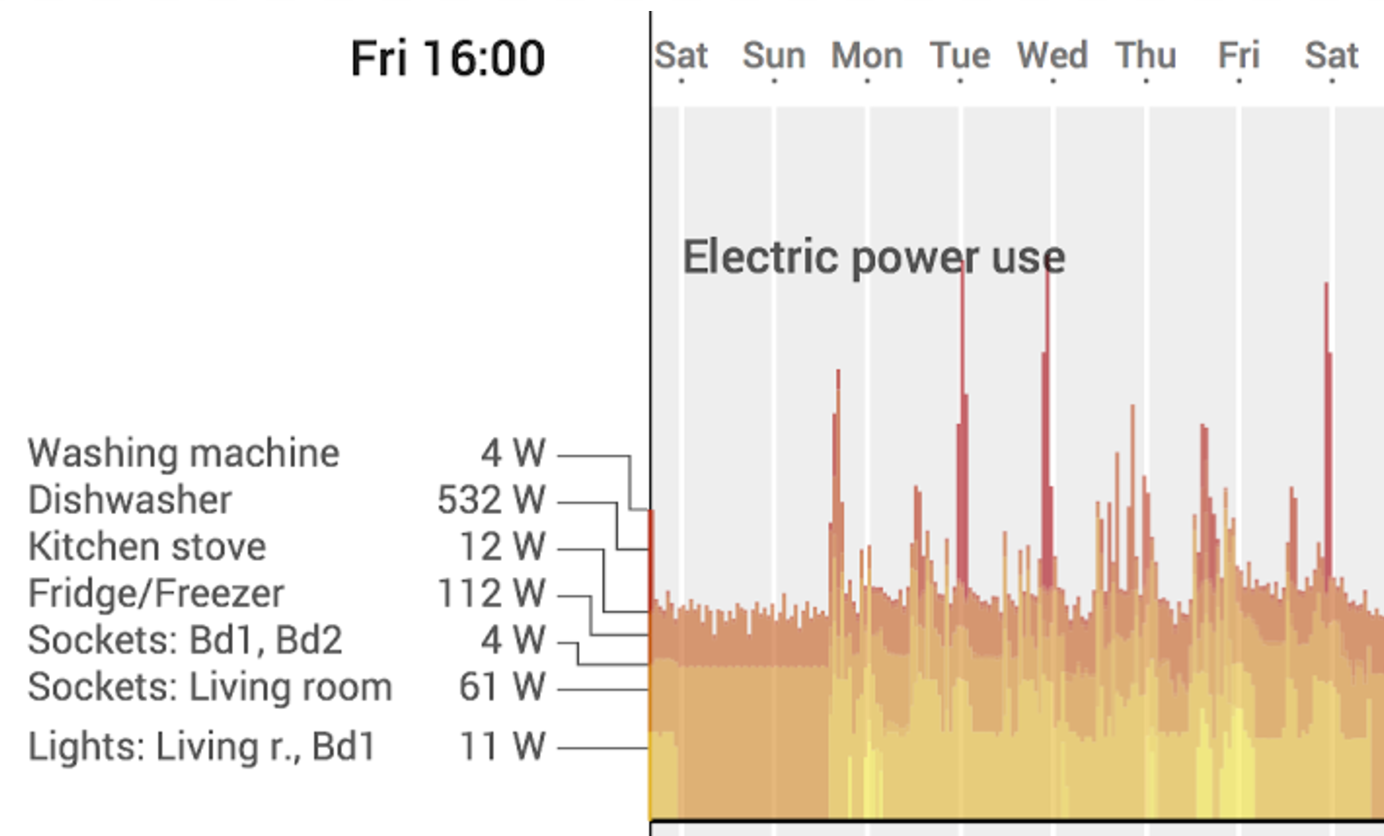We are living in the Information Age, where things that we make and consume are mostly information, and more information is available to everyone than ever before. Modern information technology brings the relevant information to our reach at the right time. For example, moving around in a city has become easier with public transportation routing and car navigation applications.
“Knowledge is power” is more true now than ever. For consumers, more information means more power to choose among available services. However, this only holds when the information is actually available. For companies, there is a strong incentive to keep the data they gather data about their markets and consumers to themselves, as it gives them power over the consumers.

Image courtesy of KROMKRATHOG at FreeDigitalPhotos.net.
Currently most companies hold on to the data they collect, and hence the development is towards closed information systems. This accumulation of data and information into private collections results in a very asymmetric distribution of power.
Not everyone is satisfied with this. The alternative is to make data and information as open as possible, and one of the key advocates of this movement is the Open Knowledge Foundation (OKF), that aims to create
A world where knowledge creates power for the many, not the few.
One of the Foundation’s key focus areas has been opening of public data sources. Recently, the Finnish OKF Chapter has been hatching the concept of MyData, which extends the openness principles from public data to personal data. The concept has been well received internationally, and the momentum culminated in the MyData2016 conference in Helsinki in September.
Dreaming of an open information age
In one of the most memorable keynotes of the conference, OKF founder Rufus Pollock shared his vision of an open information age that would make all of us freer, fairer, richer, and weller. However, action and policy is required to take us there, as the default course of development is towards a dystopia, where the gravity of power forces the information to concentrate in the hands of few.
In the core of Rufus’ vision of open information age is the opening up both public and personal data. By definition, open data means that everyone should have the freedom to use, build on, and share public data. Importantly, the opening of personal data does not mean that anyone can access my data without my permission. Instead, Rufus defined the principles such that I as an individual should have the freedom to use, build on and share my personal data, and have the control over who else gets to see my data.

Image adapted from Rufus Pollock's slides.
Taking the core of the MyData concept and knitting it together with the open data principles, Rufus brilliantly crystallised the goal for the utopian open information society.
In this society, everyone would have open access to all public data, while reserving the individuals freedom and control over their own data. To get there, we need policy changes, and we need businesses that use the available public and private data resources to create value in a sustainable and ethical manner.
Importantly, this is not just an utopistic dream, as there are many positive things going on already. Next I will discuss a few concrete examples from the mobility, energy and smart cities session of the MyData2016 conference.
Mobility and energy are interesting themes, as a large part of consumer spending and energy consumption is due to housing and transportation. There is thus an increasing need for information technology solutions that make living and moving around easier with lower costs and emissions.
Mobility service innovations from Finland
Public transportation has been one of the forerunners in open data at least in Finland, with Helsinki Region Transport (HSL) leading the way. The Journey Planner combined available transport options under a single convenient user interface. The latest version of the Planner will also include the new Citybike system as one transportation option, making it easy to combine for example train and bike rides.
An interesting new development from HSL is the Mobility Profile app, a prototype for data portability service. The app stores your favourite locations in one place and shares time with other location-based apps, such as navigator, without you having to give the navigator provider access to your sensitive data. The app won the main prize in the Mydata hackathon.
Also a more holistic vision for the future of the whole mobility sector has been created in Finland. Mobility as a Service (MaaS), presented by Sami Pippuri, is a solution for the growing urbanisation and transportation problems. MaaS provides a single app for managing everyday travel needs by giving access to all transportation in one place, empowering consumers with the power of choice.
Underhood, MaaS is an ecosystem of APIs for combining all necessary pieces from different service providers from both public (including Citybikes!) and private sector together, and providing a common intelligent routing algorithm. The concept, featured recently in The Economist, has been implement in the Whim app:
The Finnish policymakers have also been active, following Rufus’ advice. Shortly after the conference, The Ministry of Transport and Communications (the main partner of the conference) published progress in the Transport Code, aiming to
create the preconditions for customer-oriented provision of transport services and digitalisation in transport, and the preconditions for new business models and entrepreneurship.
The Transport code is good basis for efforts such as MaaS to create a global business from the local openness-driven ideas.
Energy usage mirrors our lives
While talking about personal data and the data trails we leave behind, we often focus on our online actions. But another way to track our lives is to follow when and how we use energy. With high-resolution energy consumption measurement, a surprisingly accurate picture of one’s life and habbits can be reconstructed.
This became evident when Lilli Linkola led us through some intriguing results from Smart Kalasatama. In one data-intensive project, ran by Helen and ABB, two new block houses were equipped with top notch sensory technology for energy monitoring. This allowed for example detailed analysis of electricity usage of every single appliance in the apartments on 1-minute frequency.

Image adapted from Lilli Linkola's slides.
The data and visualizations revealed for example how routined is the breakfast in different families. The extremely high resolution of the data also raised questions from the privacy point of view. Combined with water consumption, the electricity monitoring data reveals very detailed lifestyle patterns. Information such as when there is someone at home would be of course valuable for criminals, but also insurance companies would likely be willing to use for more detailed personal risk evaluation.
The problem of how to create value from personal data without sacrificing privacy is exactly what the MyData operators are set out to fix. One solution was proposed by Fedja Zdrnja from Hellodata. It is a platform for integrating energy data from various sources with smart services, while keeping the user in control.
Fedja explained that the service was born due to the changing paradigm in the energy sector towards decentralized and uncontrollable renewable energy production on the one hand, and changing energy usage habits on the other hand. Here controlled access to smart electricity metering data would allow for example variable tariffs that encourage avoiding electricity consumption on peak hours. The potential of these ideas was hindered by the fact that there are not that many data-providing smart appliances available yet.
Could access to data reduce consumption?
Although the general adoption of the technology introduced in the Kalasatama case – a utopia or a dystopia depending on your point of view – is still at least some years away, already the current energy data collection could definitely be used for providing smart services for energy saving.
Fabien Coutant from the biggest French eletricity distributor, Enedis, described their studies on how the consumers reacted when provided access to their own electricity consumption on an hourly level in an online service. At first the service acted mainly as a way to raise awareness of the consumption level, and to allow more detailed consumption monitoring. However, in the end the greatest potential was in guiding energy consumption reduction usages, with 40 % of the service users having reduced their consumption in the study.
Fabien finally emphasised that a greener energy system will need customers to get involved in their energy choices, and here the access to their own consumption data can play a key role. The energy providers and distributors should thus make the data better available to their consumers and to also facilitate development of smart services that use the data.
In Finland there are also smart metering based services that allow the consumers to study their consumption down to hourly level, for example Fortum Valpas, Helen Sävel and Caruna Energiaseuranta. There are thus many opportunities for new energy-data driven services, hopefully something as innovative as the MaaS concept for transportation!
For more MyData2016 conference material, check the videos, slides, and press coverage. And note that Mydata2017 is also coming!